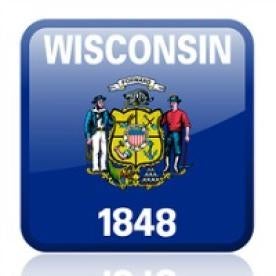Individuals and businesses are preparing for a unique holiday season due to COVID-19. As guidelines are continually adapting, staying apprised of the most recent guideline changes from the Center for Disease Control (CDC) and Wisconsin Department of Health Services (DHS) regarding COVID-19 quarantine and testing can be a challenge.
With many contemplating holiday festivities and Wisconsin’s positive test numbers continuing to increase, many businesses are updating their COVID-19 policies and/or reminding employees of expectations when exposed. Incorporating the latest guidance may aid some in improving compliance. We are all aware that if an individual was in close contact with someone who was diagnosed with COVID-19, he/she may be at risk of infection. As a reminder, “close contacts” are defined by the Wisconsin DHS guidance as the following:
-
Had direct physical contact with the person (for example, a hug, kiss, or handshake).
-
Were within 6 feet of the person for a total of more than 15 minutes in a single day.
-
Had contact with the person’s respiratory secretions (for example, coughed or sneezed on, contact with a dirty tissue, shared a drinking glass, food, towels, or other personal items).
-
Live with the person or stayed overnight for at least one night in a house with the person.
According to the Wisconsin DHS, if an individual is diagnosed with COVID-19, then that individual must isolate at home and:
-
If they are exhibiting symptoms, must remain in isolation for:
-
At least 24 hours after they are free of fever without the use of fever-reducing medications and other symptoms have improved; and
-
At least 10 days after the date they first exhibited symptoms.
-
New Guidance Regarding Asymptomatic Positive COVID-19 Test
Recently, the CDC and Wisconsin DHS issued revised guidance reducing the quarantine period for individuals that are asymptomatic but were exposed to COVID-19. The CDC recommends two additional options for modifying quarantine periods. Individuals may end their quarantine on day 10 without any COVID-19 test or may end quarantine on day 7 after receiving a negative test. Individuals should continue to monitor themselves for symptoms until 14 days after exposure. While the CDC still recommends that individuals quarantine for 14 days after the last contact with a person who has COVID-19, the CDC also recognizes the burden placed on individuals and businesses in quarantine for 14 days. The CDC explained that reducing the length of quarantine may make it easier for people to quarantine and it reduces the economic hardship and lessens the stress on the public health system.
On December 4, 2020, the Wisconsin DHS adopted the CDC’s new guidance reducing quarantine periods. The DHS supports shortening the standard quarantine period from 14 days to 10 days for people who remain asymptomatic, provided that the daily symptom monitoring continues for the full 14-day period.
The quarantine period may be further shortened to 7 days if the individual receives a negative diagnostic test within 48 hours of the proposed end of quarantine. The quarantine test must take place on day 6 or 7 of the quarantine. If the test is negative, then the individual should continue monitoring for 14 days regardless of any test results. This shortened period may enable more people to stay at home as recommended, and aid in efforts to stop the spread of the virus.
Updated Critical Infrastructure Workers Guidelines
On November 16, 2020, the CDC issued new interim guidance revising the approach businesses should take when evaluating critical infrastructure workers. The Department of Homeland Security’s Cybersecurity and Infrastructure Security Agency (CISA) states that critical infrastructure workers are in the following sectors: (a) law enforcement; (b) 911 call center employees; (c) fusion center employees; (d) public and private hazardous material responders; (e) janitorial and custodial staff; (f) workers and contractors in the food and agriculture, critical manufacturing, informational technology, transportation, energy, and government facilities industries.
Per this new guidance, all exposed critical infrastructure workers who are asymptomatic should quarantine unless, as a last resort, the individual needs to work in-person to prevent the closure of a critical infrastructure facility or cessation of operations.
The CDC recommends that if the exposed critical infrastructure worker must continue work to ensure that the company’s employees and the public are protected, then the employer should follow risk mitigation precautions. Those risk mitigation precautions include: symptom screening at home; conducting on-site symptom assessment; monitoring the worker for symptoms; requiring the worker to wear a cloth mask and practice social distancing; and cleaning and disinfecting all workplaces and shared equipment.
While this federal guidance regarding critical infrastructure workers is a substantial change, employers must continue to follow state and local guidance. It is recommended that employers work with the state and local health departments for any and all questions related to COVID-19 exposure and determining the appropriate quarantine period under the new CDC and DHS standards.




 i
i


